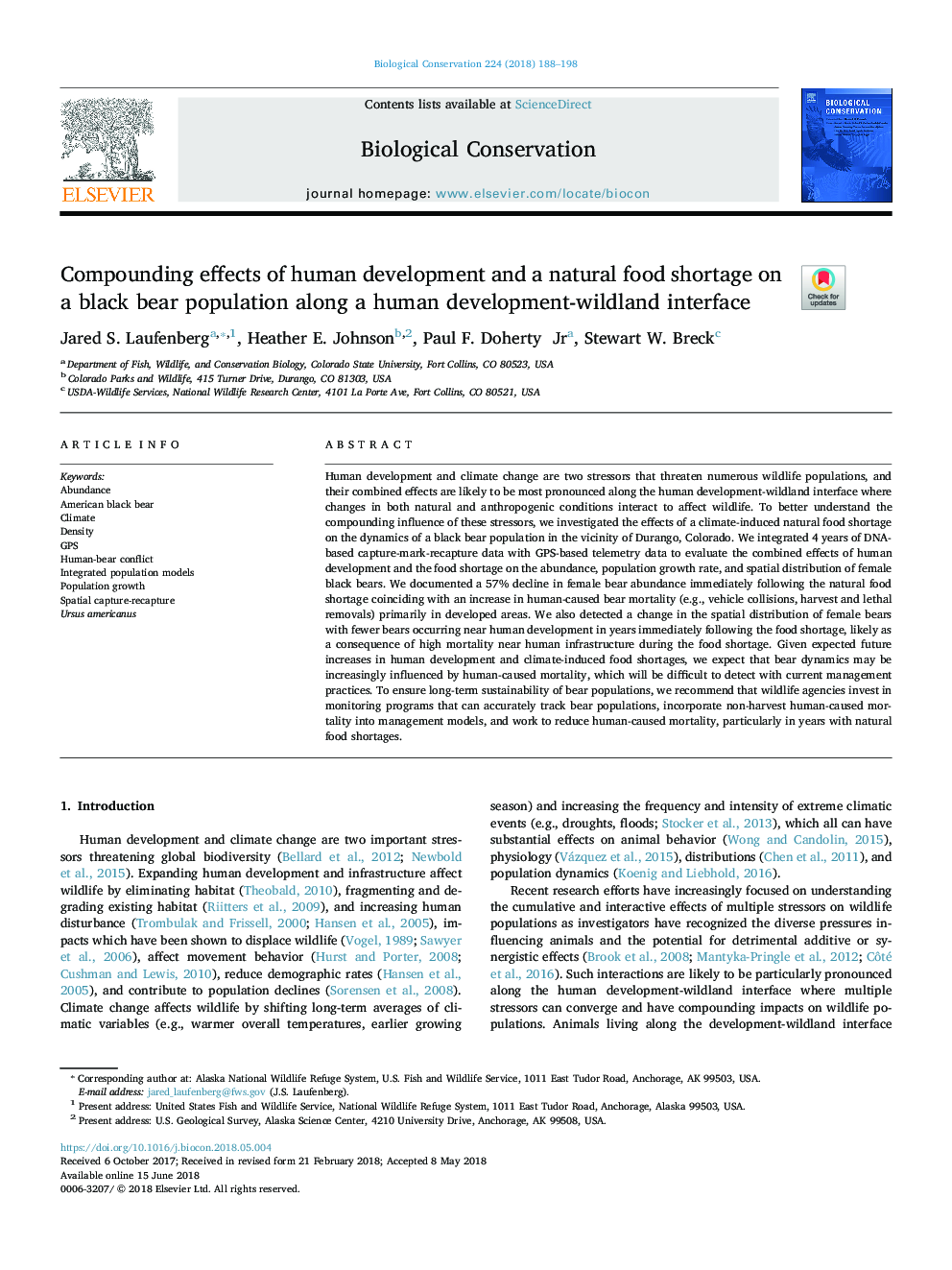| کد مقاله | کد نشریه | سال انتشار | مقاله انگلیسی | نسخه تمام متن |
|---|---|---|---|---|
| 8847196 | 1617881 | 2018 | 11 صفحه PDF | دانلود رایگان |
عنوان انگلیسی مقاله ISI
Compounding effects of human development and a natural food shortage on a black bear population along a human development-wildland interface
ترجمه فارسی عنوان
اثرات متقابل توسعه انسانی و کمبود مواد غذایی طبیعی بر روی یک جمعیت سیاه پوست در طول یک رابطۀ انسانی و حیات وحش
دانلود مقاله + سفارش ترجمه
دانلود مقاله ISI انگلیسی
رایگان برای ایرانیان
کلمات کلیدی
موضوعات مرتبط
علوم زیستی و بیوفناوری
علوم کشاورزی و بیولوژیک
بوم شناسی، تکامل، رفتار و سامانه شناسی
چکیده انگلیسی
Human development and climate change are two stressors that threaten numerous wildlife populations, and their combined effects are likely to be most pronounced along the human development-wildland interface where changes in both natural and anthropogenic conditions interact to affect wildlife. To better understand the compounding influence of these stressors, we investigated the effects of a climate-induced natural food shortage on the dynamics of a black bear population in the vicinity of Durango, Colorado. We integrated 4â¯years of DNA-based capture-mark-recapture data with GPS-based telemetry data to evaluate the combined effects of human development and the food shortage on the abundance, population growth rate, and spatial distribution of female black bears. We documented a 57% decline in female bear abundance immediately following the natural food shortage coinciding with an increase in human-caused bear mortality (e.g., vehicle collisions, harvest and lethal removals) primarily in developed areas. We also detected a change in the spatial distribution of female bears with fewer bears occurring near human development in years immediately following the food shortage, likely as a consequence of high mortality near human infrastructure during the food shortage. Given expected future increases in human development and climate-induced food shortages, we expect that bear dynamics may be increasingly influenced by human-caused mortality, which will be difficult to detect with current management practices. To ensure long-term sustainability of bear populations, we recommend that wildlife agencies invest in monitoring programs that can accurately track bear populations, incorporate non-harvest human-caused mortality into management models, and work to reduce human-caused mortality, particularly in years with natural food shortages.
ناشر
Database: Elsevier - ScienceDirect (ساینس دایرکت)
Journal: Biological Conservation - Volume 224, August 2018, Pages 188-198
Journal: Biological Conservation - Volume 224, August 2018, Pages 188-198
نویسندگان
Jared S. Laufenberg, Heather E. Johnson, Paul F. Jr, Stewart W. Breck,
